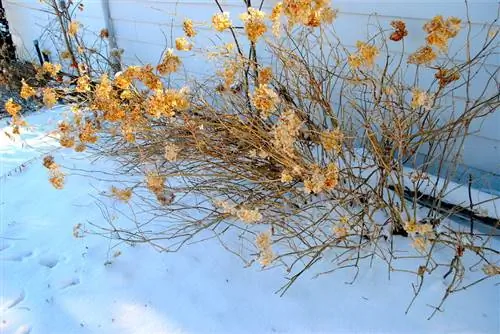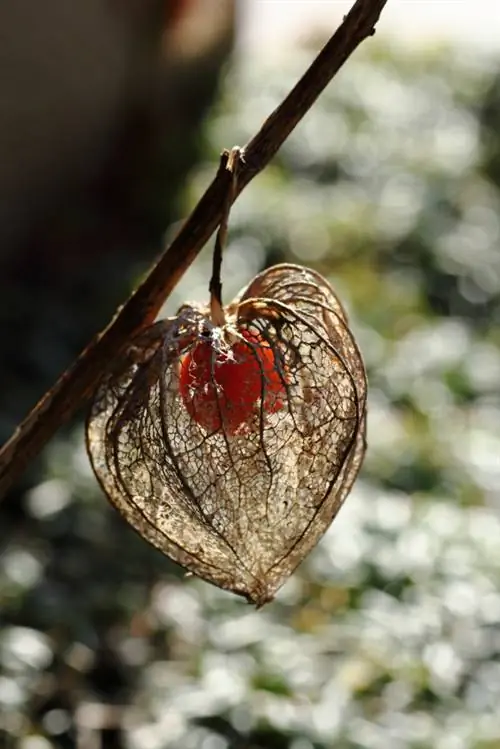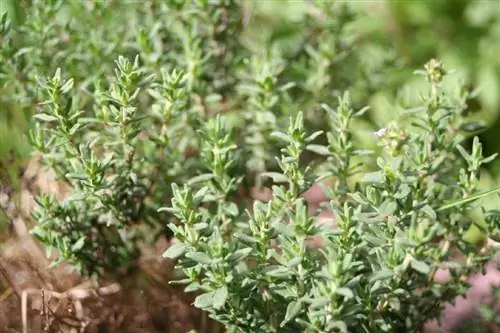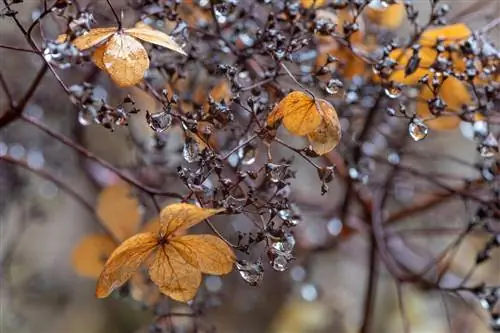- Author admin [email protected].
- Public 2023-12-16 16:46.
- Last modified 2025-01-23 11:20.
Especially in cold regions and in particularly exposed locations, your garden hydrangeas need good protection in order to survive the winter unscathed.
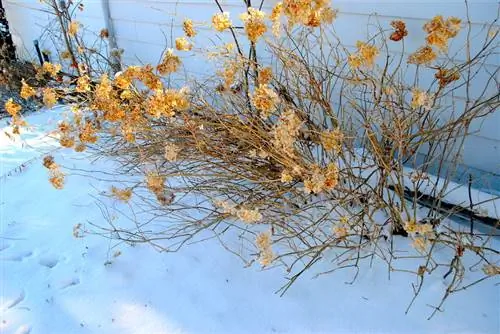
How can I protect my garden hydrangeas in winter?
To overwinter garden hydrangeas successfully, protect the roots with mulch and brushwood, use leaf litter or raffia mats for planted hydrangeas and overwinter potted hydrangeas in a frost-proof place such as the basement.
Overwintering planted garden hydrangeas
Farm or garden hydrangeas are unfortunately not particularly hardy and are at risk of freezing, especially during long periods of frost. Another problem is the flower buds that were already formed the previous year, which can mainly die in spring frosts. That's why good winter protection is extremely important, and the root area in particular should be covered with a thick layer of mulch and brushwood. For planted specimens, so-called leaf litter or wrapping them with raffia mats (€18.00 on Amazon) has also proven to be effective.
Overwintering garden hydrangeas in a pot
Garden hydrangeas grown in pots should not overwinter outdoors as the root ball freezes very quickly, even in larger planters. This would mean the death of the plant, so it is best to overwinter it in a frost-free and protected place. If necessary, the cellar can also be used as shelter.
Tips & Tricks
Depending on the temperature, the garden hydrangea should be moved back to its winter quarters from around October. Even in winter quarters, you should water from time to time; the soil should never dry out completely.

